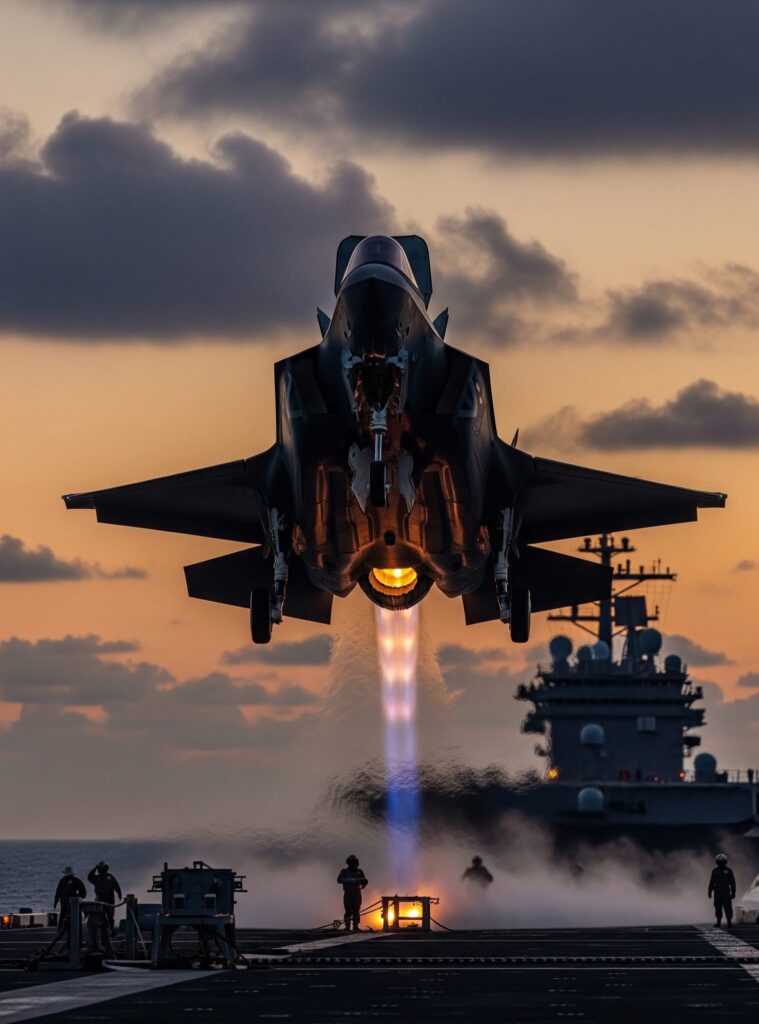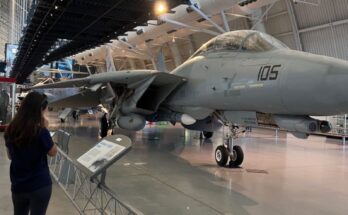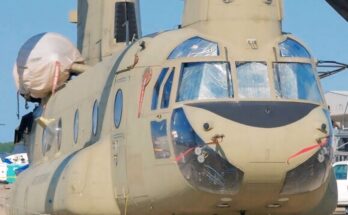
The F-35 Lightning II is one of the few modern fighter jets capable of performing vertical landings, a capability unique to the F-35B variant. This short takeoff and vertical landing (STOVL) version was designed primarily for the U.S. Marine Corps, the Royal Navy, and other allied forces that operate from smaller aircraft carriers and amphibious assault ships. The vertical landing feature allows the jet to operate in environments where long runways are unavailable, providing unmatched flexibility for military operations.
The engineering behind the F-35B’s vertical landing system is among the most complex aspects of the aircraft. At the core of this ability is the Pratt & Whitney F135 engine, which is the most powerful fighter jet engine in the world. For conventional flight, it operates as a standard turbofan engine, but during vertical operations, it transforms into a thrust-vectoring system with specialized components.
The most distinctive element of this system is the shaft-driven lift fan, located directly behind the cockpit. When vertical landing is initiated, a clutch engages, and power from the main engine drives the lift fan, producing more than 20,000 pounds of vertical thrust. At the same time, the rear engine exhaust nozzle swivels downward 90 degrees, providing additional vertical lift. Smaller roll-control ducts located on the wings stabilize the aircraft during the maneuver. Together, these systems create a balanced thrust vector that allows the jet to hover steadily above the ground.
The vertical landing sequence is a highly coordinated process controlled by the aircraft’s advanced flight control software. Once the pilot engages STOVL mode, the system automatically transitions the jet into a hover-ready configuration. The aircraft reduces forward speed, the lift fan activates, and the exhaust nozzle pivots downward. Unlike the Harrier jump jet, which required significant pilot skill to manually control thrust and balance, the F-35B’s computer systems manage the transition seamlessly. This automation allows pilots to focus on situational awareness and landing precision rather than micromanaging engine thrust.
Vertical landing is particularly valuable in naval operations. Aircraft carriers equipped with ski-jump ramps can launch F-35Bs with short takeoffs, while the vertical landing capability allows them to return without requiring long landing decks or arrestor wires. This makes the F-35B essential for smaller carriers and amphibious assault ships that lack catapult or arrestor systems used by larger carriers. Additionally, the ability to land vertically on improvised airstrips or forward bases gives military forces greater flexibility in combat zones.
However, vertical landings place significant demands on both the aircraft and its operating environment. The downward jet blast is extremely powerful, generating intense heat and pressure. Special reinforced landing pads or ship decks are often required to withstand the force. Engineers also had to design the lift system to handle repeated vertical operations without compromising structural integrity or stealth coatings.
In practice, the F-35B’s vertical landing capability has been successfully demonstrated in combat readiness exercises and real-world deployments. It allows the aircraft to operate where no other fifth-generation fighter can, combining stealth, supersonic performance, and advanced avionics with true expeditionary flexibility.
In short, the F-35’s vertical landing system represents a revolutionary leap in aviation technology. By blending raw engine power, innovative lift-fan engineering, and sophisticated flight control software, the F-35B enables modern militaries to project power from virtually anywhere in the world.
Would you like me to also create a diagram showing how the lift fan, swivel nozzle, and roll posts work together during vertical landing?


